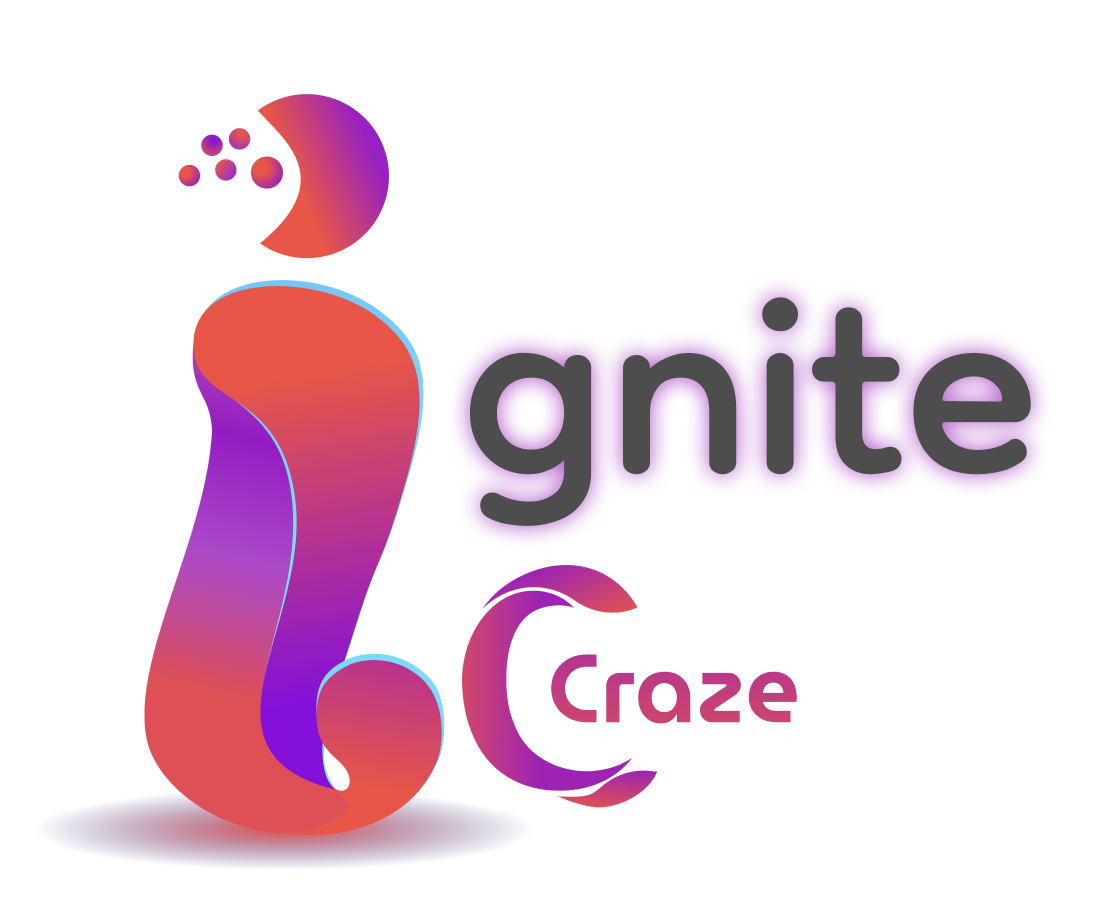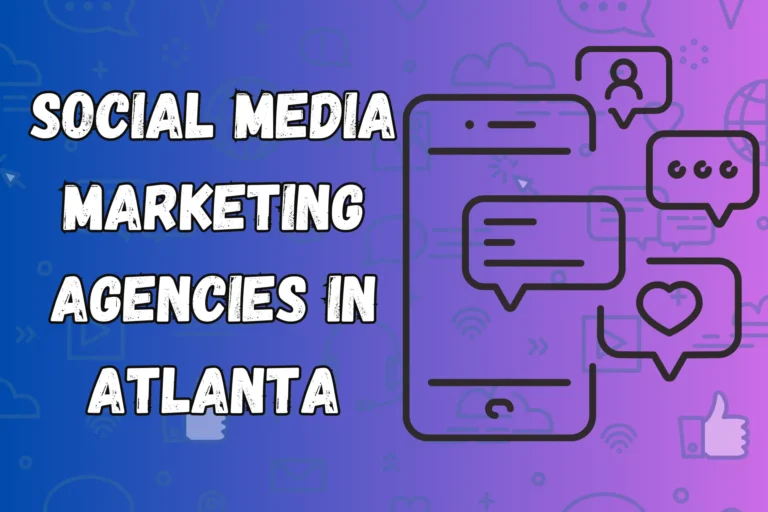Best Social Media Reporting Software
Posting trending content and responding to audiences isn’t the only way to run successful social media campaigns. In order to prove whether your idea is working and recover from occasional flops, you need to be able to measure the success of your efforts through quantitative metrics. With so many moving parts, knowing which numbers are crucial is difficult, and creating reports to showcase them can also be overwhelming. The solution to this problem lies in social media reporting software.
For social media marketing to be successful, you need the best tools. Let’s examine the importance of these tools and how to choose the right one.
The Need for Social Media Reporting Software
In the age of social media, companies are now highly dependent on the insights they generate through social media and their ability to use it effectively. 90 percent of company leaders agree that social media plays a critical role in their company’s success.
Businesses have turned to social media platforms to reach target audiences, understand buyer behavior, and identify emerging trends because of the fact that 4.95 billion people use them for an average of two hours a day. In recognition of its critical role in the customer journey, businesses are increasing their investments in social media.
Therefore, marketers must demonstrate to management that their social media marketing campaigns are actually driving revenue. In order to do this they must use social media reports to quantify the effects of social media on sales.
It is possible to analyze top-performing social media posts and find out how to replicate them. As a result of social media reports, your boss and the entire time will see how valuable your marketing efforts are as well as how humiliating flops can be dissected and avoided.
You can easily track and translate every data point from social media accounts into actionable, insightful reports with the right reporting software. It is even possible to receive real-time notifications of campaign performance and recommendations for the next best steps with the best tools.
Essential Features of Social Media Reporting Software
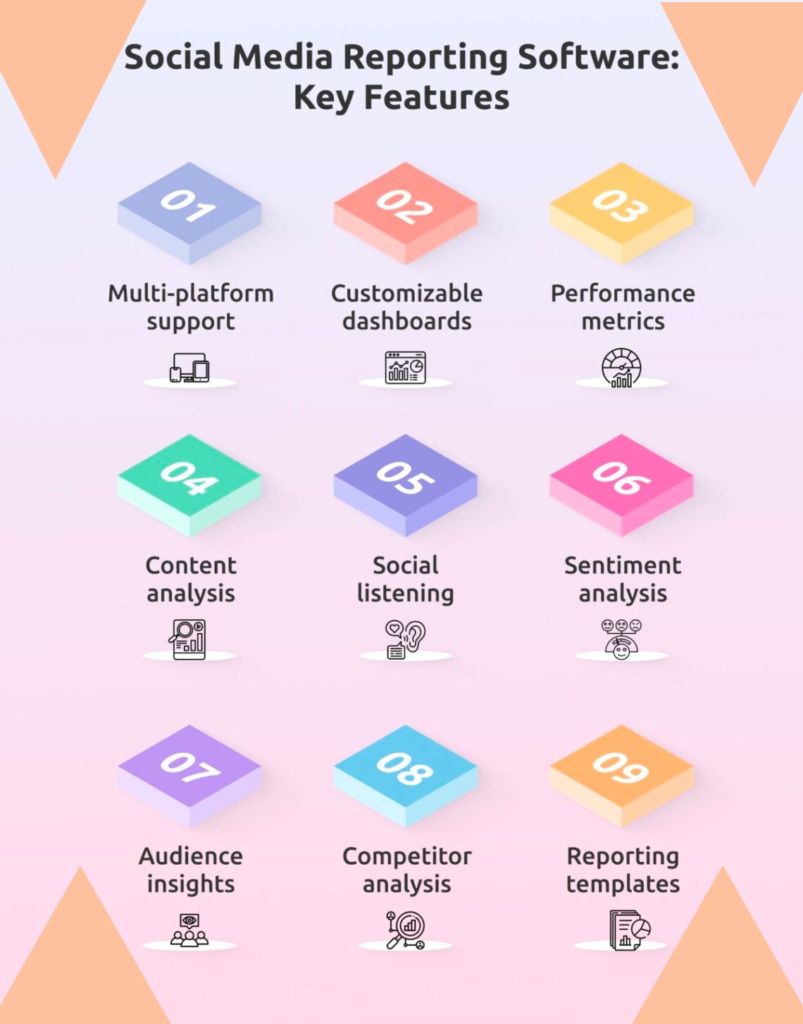
1. Multi-platform support
A social media reporting tool should be able to integrate as many of these sites as possible, since there are hundreds of them—with more being added every year. While being on all platforms at once isn’t recommended, the best reporting tool will be one that can integrate even smaller platforms, while also being present on all major platforms.
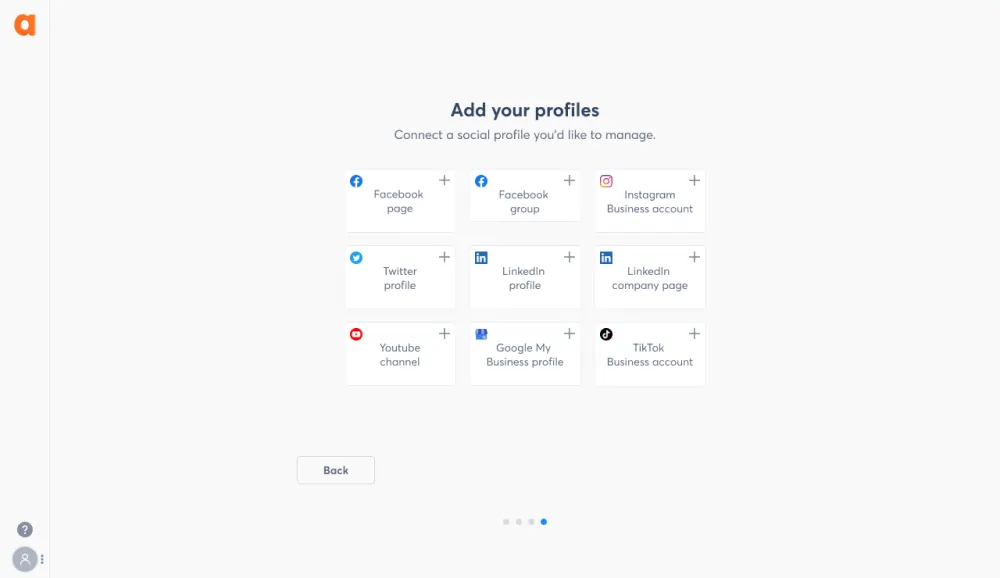
In addition to allowing you to consolidate information from different platforms, it also lets you view all the results from several platforms on one dashboard so you can see how your brand is performing.
Integrating as many accounts as possible will streamline content publishing, since most social media software also offers content management and content scheduling options. However, dedicated reporting software integrates more than just social media sites with other marketing channels such as email and search.
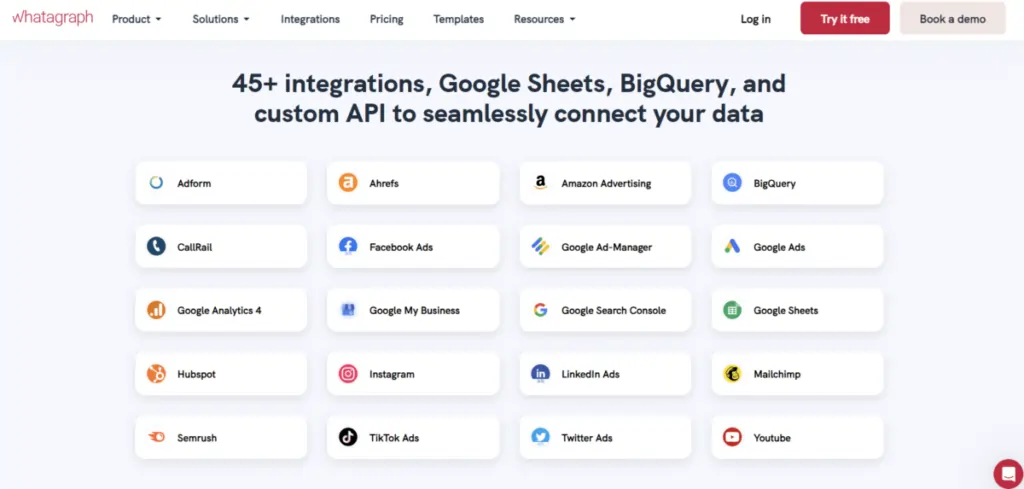
Among the 45 integrations Whatagraph offers are Facebook, Instagram, TikTok, LinkedIn, and SEMRush, as well as specialist tools such as CallRail, Hubspot, and SEMRush. In this way, you can create a comprehensive report that shows how your entire marketing campaign performed.
2. Customizable dashboards
Typically, reporting tools come with widgets that display a variety of data in a visual dashboard. It is a useful start, but it may contain unnecessary data points that are confusing or overwhelming, especially if you do not need them. This represents metrics that are important to most businesses and have become industry standards.

You can drag and drop widgets and filter data to see only the metrics you want to see with the best reporting tools. Data can be filtered by specific platforms and you can see specific metrics, posts, or campaigns by filtering it. Widgets include graphs, charts, and other visual representations that are easy to understand.
Users benefit from intuitive tools that allow them to analyze data and gather insights more quickly by customizing colors and adding notes that match their brands.
3. Performance metrics
The numbers you can track on social media are countless, but not all of them are important. Some of these metrics are vanity metrics that don’t have a significant impact on ROI despite their apparent success. It is not enough to just see likes, comments, or followers with a reporting tool. Rather, you want a tool that contextualizes these metrics into concrete and meaningful metrics like conversion rates and click-through rates.
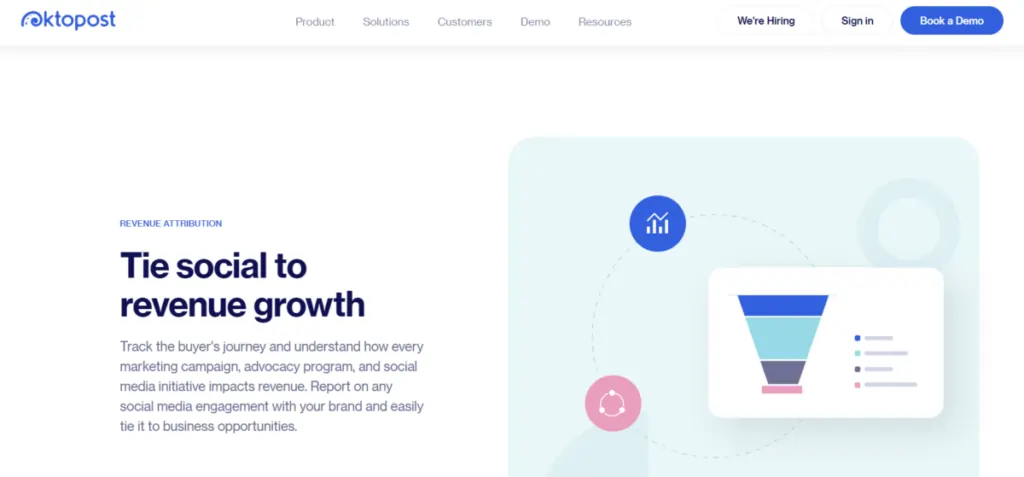
In order to concentrate on analysis instead of manual calculations, you want software that calculates these metrics automatically. The engagement metrics like impressions and views still act as indicators of what lies ahead, so you should not ignore them. If your engagement rates are high, your campaigns are working, and if they are maintained, they will positively impact your business.
Social media analytics from Oktopost help B2B marketers measure things like clicks, click through rates, conversions, engagement rates, and mentions. Social media content resonates with audiences and drives buyers through the marketing funnel when measured using these metrics, which provides real lead attribution for B2B campaigns.
4. Content analysis
It doesn’t matter what content performs well on social media. The software analyzes every post and shows you which ones get the most engagement so you can figure out which elements work best. This allows you to repeat the success of a post by creating more content similar to it. It helps you figure out which posts went viral and why.
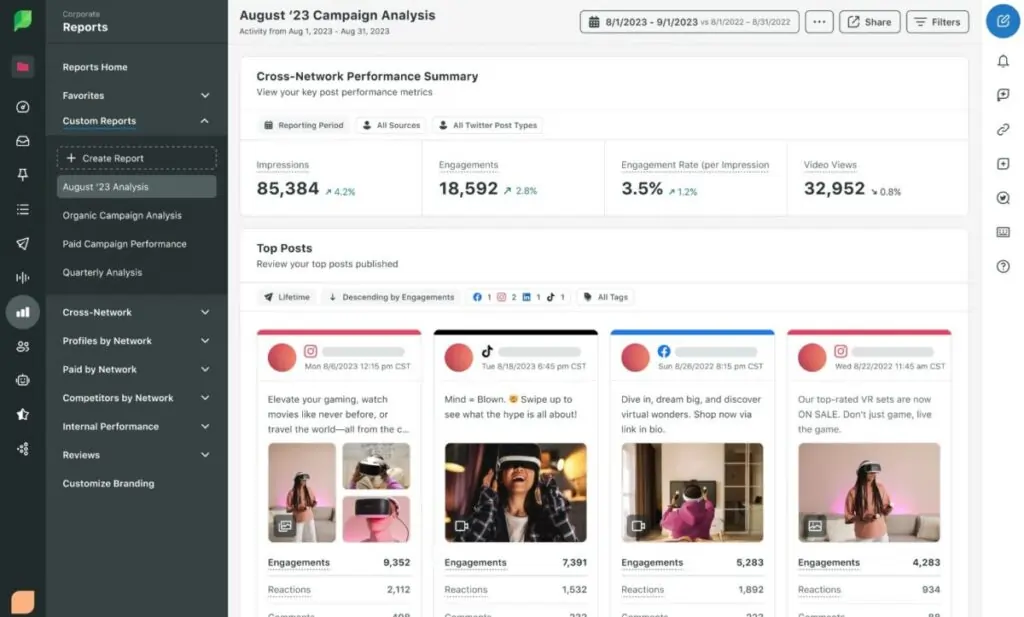
In addition to post-level reporting, Sprout Social offers custom time frames for comparing and contrasting data across social media platforms. This gives you an in-depth view of your social performance. Your audiences’ success can also be used as benchmarks for creating benchmark performances.
5. Social listening
You will be constantly mentioned on social media by your audience, often without your knowledge, whether you like it or not. Social listening is an important feature of most social media analytics software that lets you monitor brand mentions across the web, regardless of whether they are positive or negative mentions.
Using your mentions feed, you can find out what’s going on around your brand and get involved. This is possible through sentiment analysis (see next feature below), which allows you to spot problematic issues before they escalate and take action to minimize damage and maximize publicity.
A social listening tool isn’t just about brand mentions. You can also have trackers for trending topics, interests, and competitors so you can stay on top of the game.
In addition to giving you an organized stream of mentions of your company, Brand24 lets you interact with the posts directly from your dashboard, as well as see how many discussions there are, so you know if you’re trending. In addition, you can find out how influential someone is talking about your brand by calculating the authority score of the person talking about it.
6. Sentiment analysis
A huge advantage of social media is being able to gauge the public’s opinion of your brand. People aren’t afraid to voice their opinions online, just look at the woman who made an explosive video complaint about North Face’s rain jacket.
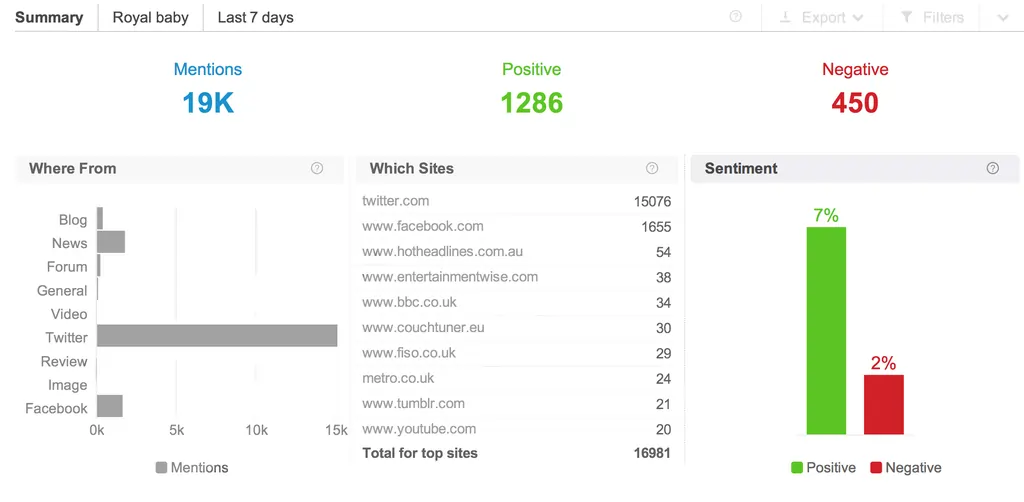
North Face’s sentiment analysis enables them to monitor positive, negative, and neutral emotions to understand the perception of their brand. They are able to assess subjective and objective statements and gain an understanding of the context of posts through sentiment analysis.
Over the last two decades, Brandwatch has been helping businesses monitor online conversations as a leading social media software solution. As well as monitoring your published content, it helps identify emerging trends and conduct competitor analyses by monitoring organic online conversations about your brand, competitors, or other interests.
7. Audience insights
Using social media helps you gain a holistic view of your target audience. You can monitor demographics, interest, purchase behavior, and many other relevant data points to get a full understanding of what your audience thinks and feels.
Through this experience, you can develop targeted campaigns that will resonate with your audience and achieve your targets every time. As well as revealing follower growth, audience insights allow you to analyze your social media presence over time so you can optimize your influencer marketing budget. You can also see which influencers your audience is following.
8. Competitor analysis
By analyzing common metrics like likes, followers, and engagement, you can gauge which brand resonates better with your audience. In addition to learning more about your audience, you can also learn more about your competitors.
In this dashboard, your brand can be compared with your competitors and you can instantly see who is better, as well as analyzing where your competitors are succeeding and failing.
In some tools, you can compare data as far back as six months to see how your brand has performed in comparison to its competitors in the past. You can also continually improve your campaigns in order to keep up or be on par with your competition by looking at the competition, especially with social media being so dynamic and fast-paced.
You can use Keyhole to analyze competitive interest over time between brands in depth. You can also compare sentiments, potential impressions, key posts, and more. You can also see trending topics and influential users driving these topics.
9. Reporting templates
Your next step is to create a report that stakeholders will value and understand once you have collected all the data you need. Most software includes templates for reporting, so you don’t have to start from scratch. Drag-and-drop widgets can be used to customize these templates as is.
When it comes to distributing the report, you can either download it as a PDF or make it available through a custom link. You can add images, add takings away, and include your logo to make it personalized and digestible.
A lot of tools enable you to create these reports once and allow them to be automatically generated on a regular basis. This eliminates the need to do manual calculations, since you know reports will arrive at the right time for everyone.
Optional: AI capabilities
Social media reporting tools are becoming increasingly artificial intelligence-powered, so it’s not surprising that it will find its way to them as well. The feature has already been incorporated into some tools, either as a means of generating insights or as a means of improving automated report generation. However, other tools have not yet incorporated the AI feature.
Although AI has polarizing views, there is no question that AI-powered reports can make the whole process faster and easier. Brand24, for instance, provides personalized GPT-powered recommendations to help your brand grow. Your brand’s online conversation can be monitored and key events and trends can be identified as well as impactful mentions can be found.
The Best Social Media Reporting Software
These are some of the most important report and analytics features of social media software.
Best for social listening and sentiment analysis: Brandwatch
A rich historical database and listening tools make Brandwatch a great consumer intelligence tool. You can stay on top of public sentiment and gain deep insights into your brand by using Brandwatch.
Best for multi-platform support: Whatagraph
You can make data-driven decisions for your entire marketing funnel using Whatagraph’s single platform, which connects and visualizes all of your marketing data including social media channels.
Best for audience & competitor insights: Keyhole
A number of features are available on Keyhole, but their main benefit is tracking brand, product, and competitor names. Additionally, the tool allows you to track hashtags across multiple social networks in one dashboard, which gives you a broader understanding of your audience’s interests. You can also use the tool to create content based on that information.
Best for content analysis: Sprout Social
Reporting features within Sprout Social include comparing posts side-by-side and viewing their performances across social networks, allowing you to determine which networks are performing better than others across social networks.
Overall Best Reporting Tool: Buffer
Your Buffer dashboard can be customized according to your goals with a sleek and streamlined interface. This tool connects with all major social networks, which is more than sufficient for most marketers. A data visualization tool that supports audience insights, content analysis, and competitive analysis, as well as sharing the data in an easy-to-understand format for stakeholders.
What Makes a Good Social Media Report
An effective social media marketing report should provide a high-level overview of the results that your campaigns have generated—both positively and negatively. The report doesn’t have to show all of the metrics if they aren’t relevant to the readers. You can track up to a dozen metrics, but don’t have to display them all.
The report should be clear and precise and reflect how you are achieving business goals while providing enough details. It should include key learnings, wins, and important metrics. You should keep your social media goals in mind when preparing your report, and set clear benchmarks to show if you are on track or not.
Identifying and reporting these numbers will help you focus on the insights that matter since you’re sure they’ll have the greatest impact on the revenue of your business. Keep your reports concise so people don’t get bored with too many numbers. Even if they’ve shown great growth, don’t report on every metric.
You can share opportunities for growth and strategies to overcome challenges in your social media campaigns by showing stakeholders your progress and next steps.
Final Thoughts
Using analytics and reporting tools, businesses can access these data and customize them to suit their audience’s needs. Social media offers rich data that can help businesses gain a better understanding of their audience. Social media reporting software allows you to create beautiful, helpful reports that enable data-driven decision-making by automating the process.
